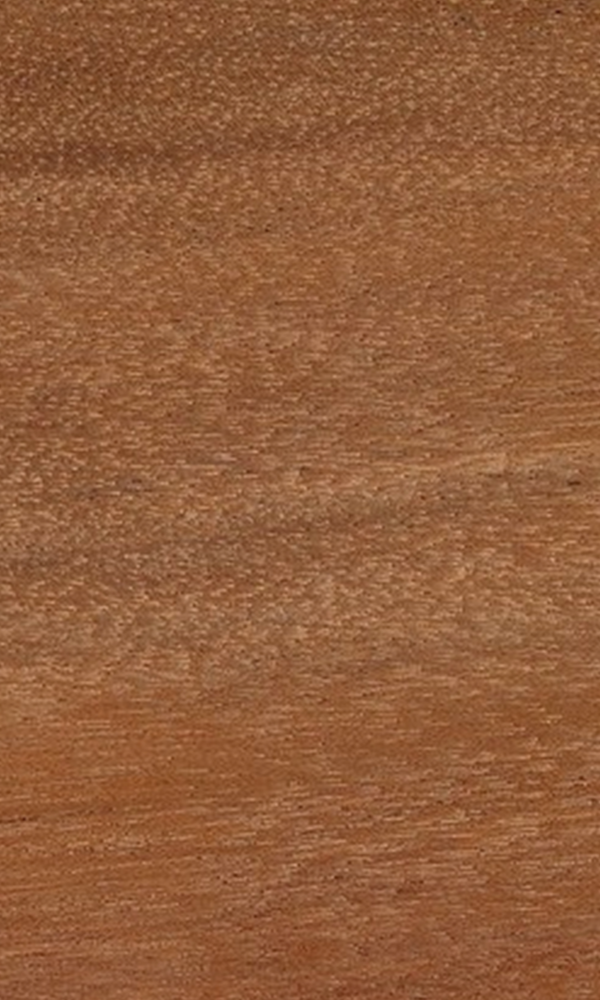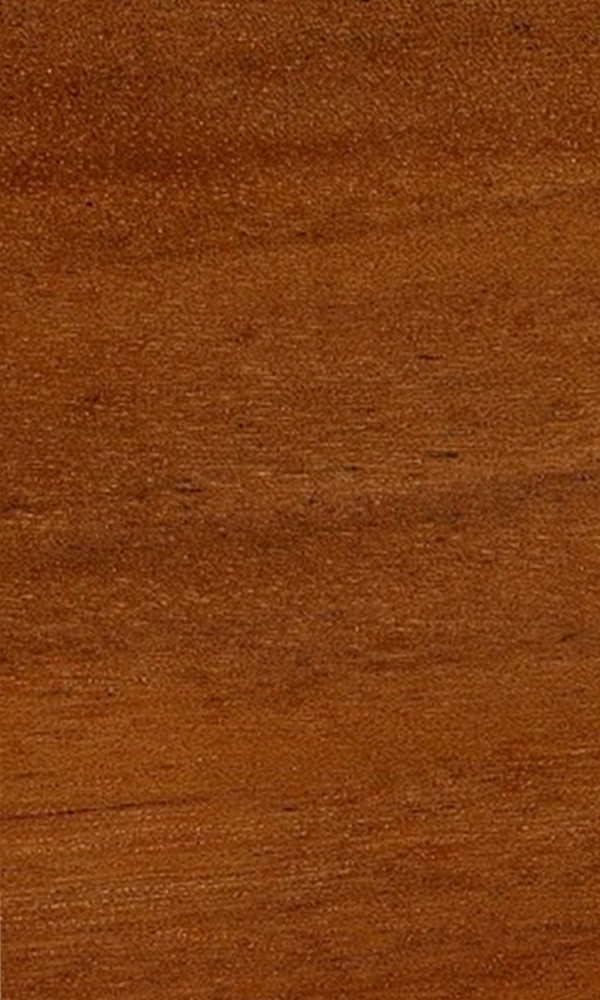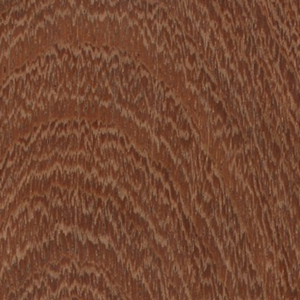- Common Name(s):Araracanga, Volador, Malerio Colorado, Bayo, Red bayo, Colorado
- Scientific Name:Aspidosperma megalocarpon
- Distribution:Mexico, Central America, and northern South America
- Tree Size:100-120 ft (30-37 m) tall, 3-4 ft (1-1.2m) trunk diameter
- Average Dried Weight:59 lbs/ft3(935 kg/m3)
- Specific Gravity (Basic, 12% MC):.75, .94
- Janka Hardness:2,450 lbf(10,900 N)
- Modulus of Rupture:22,060 lbf/in2(152.1 MPa)
- Elastic Modulus:3,041,000 lbf/in2(20.97 GPa)
- Crushing Strength:12,830 lbf/in2(88.5 MPa)
- Shrinkage:Radial: 5.8%,
- Tangential: 9.3%,
- Volumetric: 16.5%,
- T/R Ratio: 1.6
Red Mylady / Malerio Colorado
Araracanga, sometimes called Volador, is a close relative of more popular Peroba Rosa. Araracanga is slightly heavier, stronger, and of a coarser texture than Peroba Rosa.
| Color/Appearance | Heartwood ranges from golden yellow to reddish brown, sometimes with violet/pinkish streaks. Yellowish sapwood not always clearly demarcated from heartwood. Color tends to darken with age. |
|---|---|
| Grain/Texture | Grain is straight with a uniform medium texture. |
| Endgrain | Diffuse-porous; medium pores in no specific arrangement; exclusively solitary; growth rings indistinct; rays not visible without lens; parenchyma not visible. |
| Rot Resistance | Durability can vary based on growing location: rated anywhere from moderately durable to very durable regarding decay resistance, though susceptible to insect attack. |
| Workability | Overall easy to work, producing good results, though Araracanga has an above average blunting effect on cutters. Glues, turns, and finishes well. |
| Odor | No characteristic odor. |
| Allergies/Toxicity | Although severe reactions are quite uncommon, Araracanga has been reported to cause skin and respiratory irritation, as well as asthma-like symptoms. |
| Pricing/Availability | This wood is serldom seen for sale in the United States. Prices should be in the mid-to-high range for an imported species. |
| Sustainability | This wood species is not listed in the CITES Appendices, but is reported by the IUCN as being near threatened. Technically it doesn’t meet the Red List criteria of a vulnerable or endangered species, but is close to qualifying and/or may qualify in the near future. |
| Common Uses | Furniture, general construction (within its natural range), flooring, boatbuilding, and turned objects. |





Reviews
There are no reviews yet.